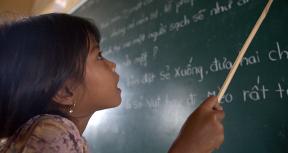In March 2020, President Malpass announced a freeze on IFC’s direct investments and advisory services support to private for-profit K–12 schools and requested IEG “undertake an evaluation of IFC investments in K–12 private education provision, including impacts on educational outcomes, poverty, and inequality.”
This evaluation follows this request and is designed to help the World Bank Group’s Board of Executive Directors and IFC’s management consider the circumstances that favor K–12 private education.
The evaluation assesses IFC’s investments in K–12 private or nonstate schools during the fiscal years 2001 to 2020 in terms of access and equity of access, education quality, relevance, and financial sustainability. It focuses on IFC investment instruments and considers IFC advisory services only as part of the Risk Sharing Facility (RSF), which integrates advisory services with an investment component.
Evaluation findings support a single conclusion: resumption of IFC investments in K–12 private schools is not advisable without making substantial changes to IFC’s approach.
In their response to the evaluation, IFC noted their agreement with IEG’s findings and announced that IFC will not resume investments, which it halted in 2017, in fee-charging K-12 private schools.
The evaluation includes lessons stemming from IFC’s 20-year experience that are relevant for future support for private investments in private K–12 education. It analyses the complexities of the financial viability of these investments and constraints on their impact on access to quality education for underserved groups.








